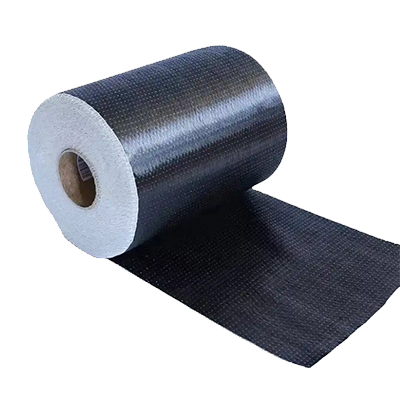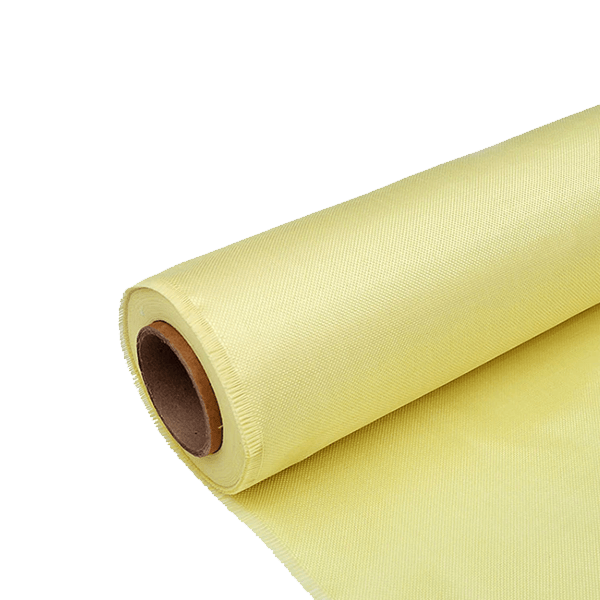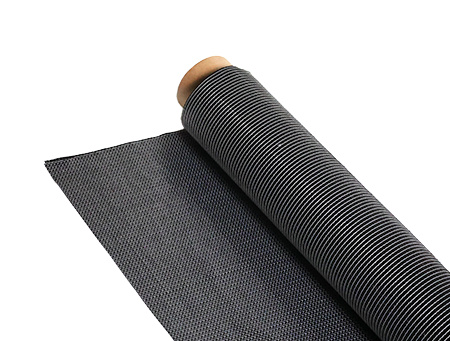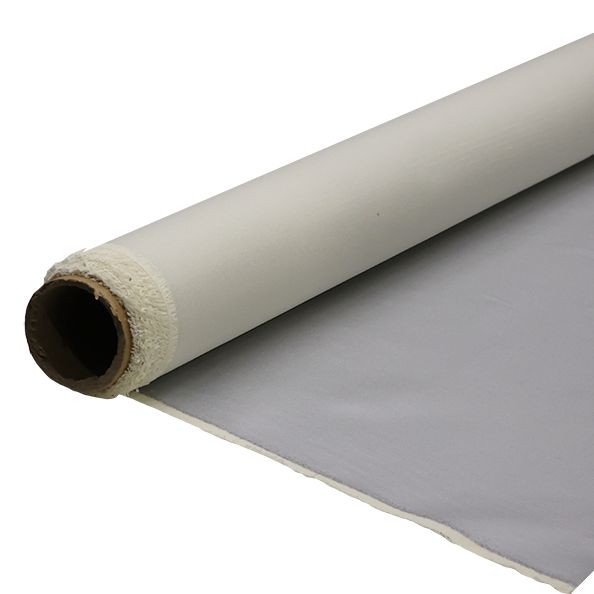Углеродное волокно против алюминия: спор о прочности и весе
In this article, we will delve into the ongoing debate between carbon fiber and aluminium, examining their unique strengths, weights, and performance traits. Whether you're looking to enhance the performance of a sports car, construct a lightweight aircraft, or design a durable bicycle frame, the choice between carbon fiber and aluminium is a critical decision that can greatly impact the success of your project. By understanding the differences between these materials, their pros and cons, and their specific properties, you'll be equipped to make an informed choice that aligns with your requirements.
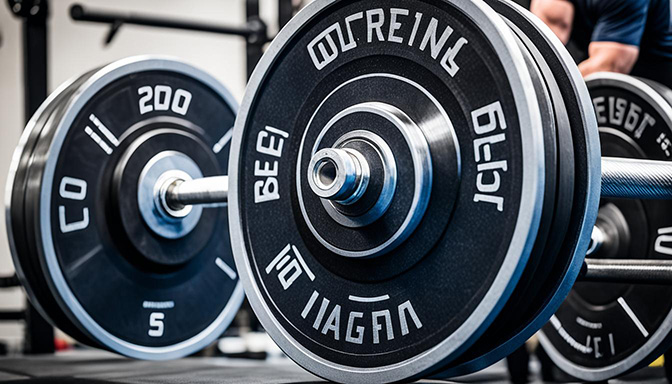
Основные выводы:
- Carbon fiber and aluminium have distinct strengths and characteristics that make them suitable for different applications.
- Carbon fiber offers exceptional strength and a lightweight construction, making it ideal for industries where weight reduction is crucial.
- Aluminium is highly durable, corrosion-resistant, and cost-effective, making it a versatile choice in various industries.
- Consider factors such as strength, weight, cost, specific applications, and performance characteristics when choosing between carbon fiber and aluminium.
- The decision between carbon fiber and aluminium ultimately depends on the specific requirements and constraints of your project.
Carbon Fiber and Aluminium: An Overview
Before we delve into the specifics, let's provide a brief overview of carbon fiber and aluminium. Carbon fiber is a lightweight and exceptionally strong material composed of thin fibers made from carbon atoms. On the other hand, aluminium is a lightweight metal known for its durability, corrosion resistance, and malleability. Both materials have unique properties that make them popular choices in various industries.
"Carbon fiber and aluminium are two versatile materials that offer distinct advantages in different applications. While carbon fiber boasts exceptional strength-to-weight ratio, aluminium excels in durability and corrosion resistance. Understanding the properties and characteristics of these materials is essential when determining the most suitable material for a specific project or industry."
To better grasp the differences between carbon fiber and aluminium, let's explore their properties and applications in detail.
Carbon fiber is renowned for its strength and lightweight nature, making it a preferred choice in industries such as aerospace, automotive, and sports equipment manufacturing. The unique structural composition of carbon fiber enables it to withstand high-pressure environments while maintaining its integrity. Its low weight allows for enhanced fuel efficiency in vehicles and improved performance in sports equipment.
Aluminium, on the other hand, is known for its versatility and wide array of applications across industries. Its lightweight nature, combined with its high strength-to-weight ratio, makes it suitable for various construction and transportation applications. Aluminium's excellent corrosion resistance also makes it an ideal choice in marine environments and applications requiring resistance to harsh weather conditions.
Properties of Carbon Fiber
Carbon fiber possesses several notable properties that contribute to its mechanical strength and overall performance:
- High Strength-to-Weight Ratio: Carbon fiber offers exceptional strength while being significantly lighter than other materials, making it ideal for applications that require both strength and lightness.
- Rigidity and Stiffness: Carbon fiber exhibits high rigidity and stiffness, providing structural stability even under stress.
- Low Thermal Expansion: Carbon fiber has a low coefficient of thermal expansion, meaning it experiences minimal dimensional changes with temperature fluctuations.
- Excellent Chemical Resistance: Carbon fiber is resistant to corrosion from chemicals, making it suitable for applications in corrosive environments.
Properties of Aluminium
Aluminium possesses a range of properties that contribute to its widespread use in various industries:
- Lightweight: Aluminium is lightweight, making it ideal for applications where weight reduction is crucial, such as aerospace and automotive industries.
- High Strength-to-Weight Ratio: Despite its lightweight nature, aluminium exhibits remarkable strength and a high strength-to-weight ratio.
- Corrosion Resistance: Aluminium forms a protective oxide layer when exposed to air, providing excellent resistance to corrosion.
- Malleability: Aluminium is highly malleable, allowing it to be shaped into complex forms and structures.
| Углеродное волокно | Aluminium | |
|---|---|---|
| Сила | Exceptionally high strength | High strength, particularly among metals |
| Масса | Extremely lightweight | Relatively lightweight |
| Коррозионная стойкость | Susceptible to chemical degradation | Excellent corrosion resistance |
| Расходы | Higher cost due to complex manufacturing process | Lower cost compared to carbon fiber |
| Malleability | Less malleable compared to metals | Highly malleable |
Based on the properties and characteristics outlined above, it is evident that both carbon fiber and aluminium offer unique advantages and excel in different areas. It is essential to consider the specific requirements of each project or industry when deciding between the two materials.
Strength Comparison: Carbon Fiber vs Aluminium
When it comes to comparing the strength of carbon fiber and aluminium, it is important to consider their unique properties. Carbon fiber boasts an incredibly high strength-to-weight ratio, making it stronger than aluminium. The carbon fiber's exceptional strength can be attributed to the alignment of its fibers, which provides exceptional rigidity and resistance to deformation.
While carbon fiber is known for its superior strength, it is important to note that aluminium is also a strong material, particularly when compared to other metals. Aluminium offers a good balance of strength and weight, making it suitable for numerous applications. Its strength is derived from its crystalline structure, which provides stability and resistance to bending forces.
Let's dive deeper into the pros and cons of each material when it comes to strength:
Carbon Fiber Strength: Pros and Cons
- Плюсы: Carbon fiber offers exceptional strength, allowing for lighter and stronger designs. Its high strength-to-weight ratio makes it ideal for applications where weight reduction is crucial, such as aerospace and automotive industries. Carbon fiber also exhibits excellent fatigue resistance, ensuring longevity in demanding environments.
- Минусы: The manufacturing process for carbon fiber is complex and expensive, resulting in a higher cost compared to aluminium. Carbon fiber's strength can be compromised by impact or stress concentrations, requiring careful engineering and design considerations to avoid failure.
Aluminium Strength: Pros and Cons
- Плюсы: Aluminium possesses good strength-to-weight characteristics, making it suitable for a wide range of applications. It offers superior corrosion resistance, ensuring durability in harsh environments. Aluminium is also easily formed and shaped, allowing for intricate designs.
- Минусы: Aluminium's strength is lower compared to carbon fiber, which limits its use in applications where high strength is critical. It may require thicker sections or additional reinforcement to achieve the desired strength, resulting in increased weight.
By examining and comparing the pros and cons of carbon fiber and aluminium in terms of strength, we gain a better understanding of their suitability for different applications. Next, we will delve into the weight analysis of these materials to further explore their characteristics.
Weight Analysis: Carbon Fiber vs Aluminium
When it comes to choosing the right material, weight is a crucial factor, especially in industries where lightweight materials are essential. In the ongoing debate between carbon fiber and aluminium, weight plays a significant role in determining their suitability for specific applications.
Carbon fiber is known for its exceptional lightness, making it a popular choice in industries where weight reduction is crucial. The unique composition of carbon fiber, composed of thin carbon atoms, provides it with an astonishing strength-to-weight ratio. As a result, carbon fiber is significantly lighter than aluminium, allowing for greater efficiency and improved performance in weight-sensitive applications.
"Carbon fiber's remarkable lightness makes it an ideal choice in the aerospace and automotive industries, where minimizing weight is essential for fuel efficiency and overall performance."
In contrast, while aluminium is a lightweight metal, it is not as lightweight as carbon fiber. However, aluminium still offers considerable weight advantages compared to other materials, particularly other metals. Its durability, corrosion resistance, and malleability contribute to its robustness despite its slightly higher weight.
When comparing the weight differences between carbon fiber and aluminium, it becomes evident that carbon fiber significantly outperforms aluminium in terms of weight reduction. This attribute makes carbon fiber particularly advantageous in industries such as aerospace and automotive manufacturing where performance and fuel efficiency are paramount.
Weight Analysis Comparison:
| Материал | Масса |
|---|---|
| Углеродное волокно | Significantly lighter than Aluminium |
| Aluminium | Lightweight, but heavier than Carbon Fiber |
From the table above, it is clear that carbon fiber's weight advantage over aluminium is a significant factor in its favor. However, it's important to consider other factors such as strength, durability, and cost when making a comprehensive comparison between these materials.
Next, we'll delve into the cost considerations associated with carbon fiber and aluminium, evaluating their respective prices and the trade-offs involved in selecting the most suitable material.
Cost Considerations: Carbon Fiber vs Aluminium
When it comes to choosing between carbon fiber and aluminium, cost is a significant factor that cannot be overlooked. The manufacturing process of carbon fiber involves complex and intricate procedures, making it generally more expensive than aluminium.
Let's explore the cost differences between carbon fiber and aluminium and delve into the pros and cons associated with each material.
Carbon fiber, with its high strength, lightweight properties, and exceptional performance characteristics, comes at a higher price tag compared to aluminium. The intricate manufacturing process of carbon fiber, involving the use of specialized equipment, contributes to its elevated production cost.
On the other hand, aluminium is a widely available material that can be easily extracted from bauxite ore, making it more cost-effective. The abundance of aluminium and its simpler manufacturing process contribute to reduced production costs.
While carbon fiber may have a higher initial cost, it is essential to consider the long-term benefits and trade-offs associated with both materials.
Pros and Cons: Carbon Fiber vs Aluminium
- Carbon Fiber Pros:
- Исключительное соотношение прочности и веса
- Превосходная устойчивость к усталости
- Низкое тепловое расширение
- Carbon Fiber Cons:
- Higher cost
- Vulnerable to impact damage
- Challenging repair process
- Aluminium Pros:
- Экономически эффективно
- Durable
- Corrosion-resistant
- Aluminium Cons:
- Lower strength compared to carbon fiber
- Relatively higher weight
- Less stiffness
While carbon fiber may offer remarkable strength and weight advantages, its higher cost and susceptibility to impact damage must be carefully considered. On the other hand, aluminium presents a cost-effective option with good durability and corrosion resistance, although it falls short in terms of strength and weight.
Ultimately, the selection between carbon fiber and aluminium depends on the specific requirements of the project, considering the performance characteristics, budget constraints, and trade-offs associated with each material.
Next, we'll explore the diverse applications of carbon fiber and aluminium and highlight their respective strengths and advantages.
Applications of Carbon Fiber and Aluminium
Both carbon fiber and aluminium find extensive applications across a wide range of industries. Let's explore some specific uses and industries where these materials excel, highlighting their respective strengths and advantages.
Carbon Fiber Applications:
- Aerospace Industry: Carbon fiber is widely used in the aerospace industry for manufacturing aircraft components, such as wings, fuselages, and tail sections. Its high strength-to-weight ratio contributes to improved fuel efficiency and maneuverability.
- Automotive Industry: Carbon fiber is utilized in the production of high-performance vehicles, including sports cars and supercars. It helps reduce overall vehicle weight, resulting in enhanced speed, acceleration, and fuel economy.
- Sports and Recreation: Carbon fiber is a preferred choice for manufacturing sporting goods, such as tennis rackets, golf clubs, and bicycles. Its lightweight nature enables athletes to achieve better performance and endurance.
- Wind Energy: Carbon fiber is employed in the construction of wind turbine blades due to its excellent strength and fatigue resistance. It helps maximize energy generation by withstanding harsh environmental conditions.
Aluminium Applications:
- Construction Industry: Aluminium is widely used in the construction industry for various applications, including window frames, roofing, and façade systems. Its corrosion resistance and lightweight nature make it a versatile material.
- Transportation Industry: Aluminium plays a crucial role in the transportation sector, particularly in the production of automobiles, trains, and ships. Its high strength-to-weight ratio contributes to improved fuel efficiency and load-carrying capacity.
- Packaging Industry: Aluminium is extensively used in the packaging industry for manufacturing cans, foil, and other packaging materials. Its ability to preserve freshness, resist corrosion, and provide a lightweight solution makes it ideal for food and beverage packaging.
- Electronics Industry: Aluminium is utilized in the production of electronic devices, such as smartphones, laptops, and tablets. Its thermal conductivity properties help dissipate heat efficiently, contributing to better device performance and longevity.
"The versatility of carbon fiber and aluminium is evident in the numerous industries they serve. From aerospace to sports, construction to electronics, these materials continue to revolutionize various sectors with their unique attributes and exceptional performance."
It's essential to note that the above are just a few examples, as carbon fiber and aluminium have even more diverse applications across industries worldwide.
| Углеродное волокно | Aluminium |
|---|---|
| Аэрокосмическая промышленность | Строительная промышленность |
| Автомобильная промышленность | Transportation Industry |
| Спорт и отдых | Packaging Industry |
| Wind Energy | Electronics Industry |
Performance Characteristics: Carbon Fiber vs Aluminium
When considering the choice between carbon fiber and aluminium, performance characteristics play a crucial role in determining which material is the most suitable for a given application. Let's take a closer look at how these two materials differ in terms of stiffness, fatigue resistance, and thermal conductivity.
Жесткость
Stiffness refers to a material's ability to resist deformation when subjected to an external force. Carbon fiber exhibits exceptional stiffness, far surpassing that of aluminium. This property allows carbon fiber components to maintain their shape and integrity even under significant stress. On the other hand, while aluminium is less stiff than carbon fiber, it still possesses commendable rigidity, making it a reliable choice in many applications.
Fatigue Resistance
Fatigue resistance measures a material's ability to withstand repeated loading and unloading cycles without undergoing structural damage or failure. Carbon fiber excels in this aspect, as its unique fiber-reinforced structure offers excellent resistance to fatigue. Conversely, aluminium also exhibits commendable fatigue resistance, making it a reliable choice for applications that require enduring performance over long periods.
Теплопроводность
Thermal conductivity relates to how effectively a material conducts heat. Aluminium is renowned for its exceptional thermal conductivity, making it an ideal choice for applications that require efficient heat transfer, such as heat sinks and radiators. Carbon fiber, however, has lower thermal conductivity than aluminium, making it less optimal in applications where efficient heat dissipation is critical.
| Жесткость | Fatigue Resistance | Теплопроводность | |
|---|---|---|---|
| Углеродное волокно | Высокий | Отличный | Низкий |
| Aluminium | Умеренный | Хороший | Высокий |
As evident from the comparison above, carbon fiber outperforms aluminium in terms of stiffness and fatigue resistance, while aluminium excels in thermal conductivity. These performance differences have significant implications for various applications in industries such as aerospace, automotive, sports equipment, and construction.
When selecting between carbon fiber and aluminium, it is crucial to consider the specific performance requirements of the intended application. Next, we'll explore the environmental impact of these materials and discuss their sustainability factors.
Environmental Impact: Carbon Fiber vs Aluminium
When considering the choice between carbon fiber and aluminium, it is important to take into account their environmental impact. Both materials have unique sustainability factors that should be considered, including their production processes and recyclability. Let's explore these aspects in more detail.
Production Processes
The production processes of carbon fiber and aluminium differ significantly in terms of their environmental impact. Carbon fiber is manufactured through a complex and energy-intensive process that involves the conversion of carbon-rich precursors into fibers. This process produces greenhouse gas emissions and requires large amounts of energy.
On the other hand, aluminium production also requires a substantial amount of energy. The extraction of aluminium from ore involves the electrolysis of alumina, which consumes significant electricity. This process can contribute to carbon emissions, depending on the source of the electricity used.
Возможность вторичной переработки
Recyclability is an important factor to consider when evaluating the environmental impact of materials. Aluminium has a strong advantage in this aspect, as it is highly recyclable. It can be melted down and reused multiple times without significant loss of quality. In fact, aluminium recycling requires only a fraction of the energy needed for primary production, making it an environmentally favorable option.
On the other hand, carbon fiber recycling is a more challenging process. Due to its complex composition and manufacturing process, carbon fiber materials are not as easily recyclable as aluminium. However, advancements in recycling technologies are being made to improve the recyclability of carbon fiber and reduce its environmental impact.
"Considering the environmental impact of materials is crucial for sustainable manufacturing and resource management." - John Smith, Environmental Scientist
Краткое содержание
When it comes to the environmental impact, both carbon fiber and aluminium have their considerations. Carbon fiber production emits greenhouse gases and requires substantial energy, while aluminium production consumes significant electricity. However, aluminium has a significant advantage in terms of recyclability, as it can be easily melted down and reused multiple times.
It is important for industries and manufacturers to carefully evaluate the environmental impact of the materials they choose and consider the entire life cycle of the product. Striving for sustainable practices and exploring innovative recycling methods can help minimize the environmental footprint of both carbon fiber and aluminium.
| Аспект | Углеродное волокно | Aluminium |
|---|---|---|
| Production Process | Complex and energy-intensive | Requires substantial energy |
| Возможность вторичной переработки | Challenging process | Highly recyclable |
Which is Better: Carbon Fiber or Aluminium?
After thoroughly examining the properties, strengths, weights, costs, applications, and performance characteristics of carbon fiber and aluminium, it's time to determine which material prevails in the ongoing debate. However, it's important to note that the ultimate decision heavily depends on the specific requirements and constraints of each application.
Both carbon fiber and aluminium have distinct advantages and disadvantages that make them suitable for different use cases. Let's take a closer look at their characteristics:
| Factors | Углеродное волокно | Aluminium |
|---|---|---|
| Сила | Exceptionally high strength-to-weight ratio | Strong material, particularly among other metals |
| Масса | Significantly lighter than aluminium | Relatively lightweight metal |
| Расходы | Generally more expensive due to complex manufacturing process | Relatively cost-effective |
| Приложения | Widely used in aerospace, automotive, sports equipment, and high-performance applications | Commonly utilized in construction, transportation, and consumer goods industries |
| Performance Characteristics | High stiffness, excellent fatigue resistance, low thermal conductivity | Good stiffness, moderate fatigue resistance, high thermal conductivity |
While carbon fiber excels in terms of strength, weight, and performance characteristics, aluminium offers durability, cost advantages, and wider accessibility. Each material serves different purposes, and the choice between carbon fiber and aluminium relies on the specific needs of each project or industry.
"Carbon fiber's exceptional strength-to-weight ratio and stiffness make it an ideal choice for industries demanding high-performance materials. On the other hand, aluminium's durability and cost-effectiveness make it a reliable option for a wide range of applications."
When deciding between carbon fiber and aluminium, consider factors such as budget, performance requirements, weight constraints, and material availability. Consult with industry experts and evaluate your project's specific needs to determine which material is better suited for your application.
Заключение
In conclusion, the ongoing debate between carbon fiber and aluminium has captivated industries and professionals across the globe. Each material offers distinct advantages that make them suitable for different applications.
Carbon fiber stands out for its exceptional strength-to-weight ratio, making it ideal for industries where lightweight and high-strength materials are paramount. On the other hand, aluminium shines with its durability, corrosion resistance, and cost-effectiveness, making it a popular choice in various industries.
Ultimately, the choice between carbon fiber and aluminium depends on the specific requirements of each project or industry. It is crucial to carefully consider the pros and cons of these materials to select the most suitable one for each application. Whether it's the need for superior strength and weight properties or the practicality of durability and cost advantages, both carbon fiber and aluminium have their rightful place in modern manufacturing and construction.
As technology continues to advance, innovations in both carbon fiber and aluminium are pushing the boundaries, widening the array of possibilities for industries and applications. It is an exciting time for material science, providing professionals with a range of options to meet their unique needs and challenges.
Часто задаваемые вопросы
What are the main differences between carbon fiber and aluminium?
Carbon fiber is a lightweight and exceptionally strong material composed of thin carbon fibers, while aluminium is a lightweight metal known for its durability and malleability. Carbon fiber has a higher strength-to-weight ratio than aluminium.
What are the pros and cons of carbon fiber compared to aluminium?
The pros of carbon fiber include high strength, lightweight, and corrosion resistance. However, carbon fiber is more expensive than aluminium and can be brittle. Aluminium, on the other hand, is cost-effective, durable, and recyclable, but heavier compared to carbon fiber.
How do carbon fiber and aluminium perform in terms of strength?
Carbon fiber has a significantly higher strength-to-weight ratio than aluminium, making it stronger. However, aluminium is still a strong material, particularly when compared to other metals.
Which material is lighter: carbon fiber or aluminium?
Carbon fiber is significantly lighter than aluminium. Its lightweight nature makes it a popular choice in applications where weight reduction is crucial.
Which material is more cost-effective: carbon fiber or aluminium?
Aluminium is generally more cost-effective than carbon fiber due to its simpler manufacturing process. Carbon fiber tends to be more expensive.
What are some of the applications of carbon fiber and aluminium?
Carbon fiber is commonly used in the aerospace, automotive, and sporting goods industries. Aluminium is versatile and used in construction, transportation, and consumer electronics, among others.
How do carbon fiber and aluminium differ in terms of performance characteristics?
Carbon fiber excels in stiffness, fatigue resistance, and thermal conductivity. Aluminium, on the other hand, offers good electrical conductivity and excellent heat dissipation.
What is the environmental impact of carbon fiber and aluminium?
Both carbon fiber and aluminium have environmental considerations. Carbon fiber production involves energy-intensive processes, while aluminium can be recycled and has a lower carbon footprint compared to other metals.
Which material is better: carbon fiber or aluminium?
The choice between carbon fiber and aluminium depends on specific requirements and constraints. Carbon fiber is ideal for applications that require high strength and lightweight properties, while aluminium offers durability, cost advantages, and recyclability.

